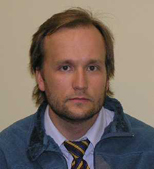Understanding Criminal Evidence
Series / Aspen Criminal Justice Series
Understanding Criminal Evidence
Book length
544 pages
Publication Date
2012-12-05
Description
Table of contents
Preface
Understanding Criminal Evidence is a carefully designed undergraduate text featuring a case-method approach and focused solely on criminal evidence. Learning the rules from case analysis allows students to apply the material to real world situations, fostering an understanding of the Rules of Evidence. Solid pedagogy makes the material more accessible than a traditional law school casebook text and features end-of-chapter review questions and key terms. Each chapter has a major introductory case that highlights the evidentiary issues. Several sub-cases in chap every chapter illustrate the ramifications of the rules. Trial transcripts and real world problems help students apply the rules to real situations they may face in practice.
Features:
- Case-method approach to criminal evidence
-
Case analysis methodology
- students apply the rules to the real world and to real life
- Features a traditional approach
- material designed specifically for undergraduates
- focused solely on criminal evidence
-
Sound pedagogy
- end-of-chapter review questions
- key terms
- material more accessible than a traditional law school casebooks
- Cases in each chapter
- one major introductory case highlighting evidentiary issues
- several sub-cases illustrating ramifications of the rules
- Trial transcripts and real world problems help students apply the rules
Read More
Table of Contents
Summary of Contents
Chapter 1 & Why and How We Have Rules of Evidence
Chapter 2 & The Stages of a Criminal Case and How to Read
the Legal Documents Associated with a Criminal Case
Chapter 3 & Burden of Proof and Alternatives to Formal Proof:
Judicial Notice, Presumptions, Inferences, and
Stipulations
Chapter 4 & Relevance: Probative Value and Materiality,
and Exclusion of Relevant Evidence
Chapter 5 & Constitutional Exclusion of Evidence
Chapter 6 & Character Evidence
Chapter 7 & Privileges
Chapter 8 & Witnesses and Competency
Chapter 9 & Opinions, Experts, and Scientific Evidence
Chapter 10 & Examination, Impeachment, and Rehabilitation
of Witnesses
Chapter 11 & Hearsay and Hearsay Exceptions
Chapter 12 & Authentication, Identification, Exhibits,
and the Best Evidence Rule
Chapter 1 & Why and How We Have Rules of Evidence
Chapter 2 & The Stages of a Criminal Case and How to Read
the Legal Documents Associated with a Criminal Case
Chapter 3 & Burden of Proof and Alternatives to Formal Proof:
Judicial Notice, Presumptions, Inferences, and
Stipulations
Chapter 4 & Relevance: Probative Value and Materiality,
and Exclusion of Relevant Evidence
Chapter 5 & Constitutional Exclusion of Evidence
Chapter 6 & Character Evidence
Chapter 7 & Privileges
Chapter 8 & Witnesses and Competency
Chapter 9 & Opinions, Experts, and Scientific Evidence
Chapter 10 & Examination, Impeachment, and Rehabilitation
of Witnesses
Chapter 11 & Hearsay and Hearsay Exceptions
Chapter 12 & Authentication, Identification, Exhibits,
and the Best Evidence Rule
Read More
Professor Materials
Please sign in or register to view Professor Materials. These materials are only available for validated professor accounts. If you are registering for the first time, validation may take up to 2 business days.
Product Information
Publication date
2012-12-05
Pages
544
Digital Product
9781454833628
Subject
Evidence
Are you an educator?
Publication date
12-05-2012
Publication Date
12-05-2012
Inquire Below
Are you an educator?
Understanding Criminal Evidence
Paperback
Are you an educator?
Notify me when back in stock
We will send a notification to example@email.com when this product is back in stock.
Publication date
12-05-2012
Publication Date
12-05-2012
Are you an educator?
Understanding Criminal Evidence
Digital Product
Are you an educator?
Publication date
Publication Date
Are you an educator?
Understanding Criminal Evidence
LLPOD
Are you an educator?

